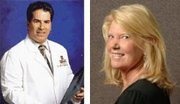Have you ever started taking pain medications only to discover that long after the pain had gone you were still taking the pills out of habit? Over 5.2 million Americans are currently using prescription pain relievers such as Vicodin, OxyContin, Morphine and Codeine non-medically.
These medications are just a few that fall into the category of Opioids. In the last ten years painkiller abuse has increased over 140% which is higher than any other drug.
Even when some people take drugs for pain properly, it could still lead to dependence. They may have individual differences such as genetic predisposition, history of substance abuse in their family or their body processes a drug differently which can determine its effect. You or someone you care about may be one of those more susceptible to narcotics that are highly effective as well as highly addictive. So, what are some indications you are on your way to dependence?
Drug Dependence
The road to dependence is a seven step process. We start with the first step, recreational or medical use because drugs are effective. In step two we say, “Ahhhh”…pain relief and pleasure and since we are creatures who seek pleasure and avoid pain, we enter step three, repeated use.
Now something begins to happen in our brain and the brain changes. Step four leads us further into dependency where we begin to think, “What might happen if I stop? Will I feel pain again?” Step five causes us to feel afraid of withdrawals and our cravings begin for the drug and the relief it gives us. Advancing into sixth step is inappropriate drug use. Remember, your brain goes through physical changes and these changes continue during the cravings and even after you stop taking the drug.
The seventh step is rationalizing the dependence. This is the critical point. “What decision do I make?…To use or misuse?” Maybe you say to yourself, “If I take three now…I won’t need anything tomorrow.” Guess what happens when tomorrow comes? The cravings get stronger and louder and your willpower and common sense tell you to allow yourself to get into a habit of inappropriate drug use. Now you’re hooked! You have entered the final step of drug dependence.
Let’s review these steps again:
1) Medical/Recreational Drug Use
2) Relief or Pain/Pleasure
3) Repeated Drug Use
4) Changes in the Brain
5) Cravings and Fear of Withdrawal
6) Inappropriate Drug Use
7) Drug Dependence
Overall, in the dependency stage your body has built up a tolerance to the drug you are taking and since your brain has changed, it leads into a cycle of physical dependence, cravings, and relapse that can last for months or even years.
Drug Dependency Questionnaire
How do you really know if you are dependent on a drug? Reckitt Benckiser Pharmaceuticals says to ask yourself the following questions about you or someone you care about…
• Have you ever felt the need to cut down on your use of prescription opioid pain medication?
• Have you ever given up activities to use prescription opioid pain medication?
• Are you spending more time on activities to get prescription opioid pain medication?
• Have you ever used prescription opioid pain medication despite negative consequences?
If your answer is “Yes” to any of these questions, you may have unintentionally become drug dependent and have now joined the over 2 million Americans who are opioid dependent. The World Health Organization and the National Institute on Drug Abuse defines opioid dependency a brain disease with a behavioral disorder. This chronic relapsing brain disease has serious harmful consequences. They are, however, preventable and treatable. If left untreated the disease can last a lifetime. Should relapse occur more treatment and adjustments in medication are required and always available.
Treatment
So, now what do you do when you want to stop and just can’t do it on your own? If you fall into this category, know that you can stop with medically assisted treatment and counseling to break through your mental barrier of dependence and abuse.
“As an Addiction Specialist, I have found that there is an excellent medication to suppress opioid withdrawal symptoms and reduce cravings. It can help treat the 40 – 60% of people who relapse and are opioid dependent…It’s Suboxone, a product of Reckitt Benckiser Pharmaceuticals. I am certified to prescribe Suboxone and also support and recommend their model of Quality Patient Care for primary care, treatment monitoring, and recovery support” says Dr. Stuart Finkelstein.
Quality Patient Care Model
Primary Care:
• Screen
• Treatment
o Induction (can take 2-3 days)
o Stabilization (can last from days to weeks)
o Maintenance
o Psychosocial Therapy
• Treatment Monitoring
• Treatment Support
Treatment Monitoring:
• Monitoring care during treatment – identify and reduce threats to progress
o Evaluate psychosocial therapy
o Encourage self-monitoring
o Intervene upon threats to relapse
o Have a plan in-place should relapse occur
o Follow-up office visits to monitor progress
o Provide access to continuing treatment support such as the caregiver
o Urine drug screens
“We have taken the support system one step further. We call it the STARS (Suboxone Treatment And Recovery Support) Program”, says Dr. Finkelstein.
The components are:
STARS Recovery Support Requirements:
o Only a desire to be sober
o Current sobriety is not a requirement but a goal
o Quality of life is more important than length of sobriety
o Medication assisted treatment is accepted and not discouraged
o Newcomers are not required to introduce themselves but are encouraged to do so that everyone can get to know them
o Members are encouraged to get sponsor
o Members do not need to pretend to be doing better than they really are
o Members should be encouraged to share their successes as well as their failures
o We offer unconditional love…not judgment
Meeting Outline:
o Read a Thought for Today or whatever inspiration book he/she chooses
o A small donation is requested to be used by the membership for coffee, donuts cakes, central office
o Leader will then give a 7 minute talk on their sobriety
o Leader will rotate weekly
o Everyone will be called upon to share
o A pre-printed Step Workbook will be handed out monthly
o Sobriety Related Announcements
o Adjourn with St. Francis Serenity Prayer
STARS 12 Step Success Stories
• “Suboxone is really the miracle of its time for opioid dependence recovery as compared to other mediations and therapy. This medication cuts cravings, acts as an antidepressant, has limited euphoric effects, and requires less medication as you go along in treatment. The antidepressant qualities actually improve as your dosage decreases. The drug alone, by itself, does not do anything more than stabilizing your mood, but with therapy as STARS it supercharges your recovery plan and provides a jump start for opioid detox and recovery plans.”
Pat Brady, Founding Member of STARS & Supporter for Suboxone
• " Suboxone stabilized the physical symptoms and behaviors associated with opiate withdrawal; (i.e. cravings and drug seeking). I could then focus on the critical aspects of recovery - the emotional and spiritual."
Dan M.
• “My first ingestion of a narcotic occurred at a rather young age, (grade-school). I drank about 1/3 of the noxious tasting fluid of a bottle of paregoric in my parent’s medicine cabinet. (Note: paregoric is "camphorated-tincture of opium", an "old-school" opiate, still occasionally prescribed up until the later 1960’s). So my first drug experience wasn't marijuana, or pills or the "mind-bending" drugs so prevalent back then, but was an opiate.
Fast forwarding through a decade’s long nightmare of using and drinking, stopping, relapses, promises to stop, 12-step meetings, more relapses, & treatment centers; I emerged in a state of isolation from all that makes life worth living and deeply cynical concerning the notion of "recovery".
Today, I have a growing sense of enthusiasm about my own recovery and life. Today, I have a sponsor, I have started working steps, and enjoy my NA, AA, and STARS meetings and reconnecting with my higher power. Thus, after 40+ years of using drugs, with suboxone I am starting to break the decade’s long pattern of isolation and cynicism’s participation with others that was always central to my relapses. I've watched this miraculous change happen in other addicts so I know I am not unique.”
John L.
Closing Comment
“Prescription drug use is currently a major problem affecting all ages and segments of society, including major personalities, and can be a potentially fatal disease. Currently pain pills exceeded marjaruina as the entry level drug among adolescents. Without treatment this progressive disease affects all areas of life including medical, legal, financial, work/school, and relationships. With treatment I know patients can live a fruitful productive life,” concludes Dr. Finkelstein.
By
Stuart Finkelstein, MD, Certified American Society of Addiction
Carol Workman, EdD, CHt, CTNLP





Add a CommentComments
There are no comments yet. Be the first one and get the conversation started!